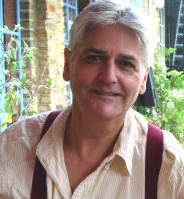Cognitive Mapping and Radio Drama by Alan Beck - Consciousness, Literature and the Arts, Volume 1 Number 2, July 2000
also at http://blackboard.lincoln.ac.uk/bbcswebdav/users/dmeyerdinkgrafe/archive/cog.html
Notes
Note 1
Perspectival painting on the stage backcloth, and film also, represent homomorphically, that is spatial properties represent spatial properties of the things represented relatively. See Altman, 1992, 46 ff on the relationship between image scale and sound scale.
Also:
These transformations [processing incoming data] may be viewed as utilising sensory input to modify ongoing internal functional states. These internal functional states are then homomorphic with external reality. The sensory input feeds and modulates an internal state of intrinsic origin. (MacKay, 1987, 93)
Note 2
Here is the description by Llinas, the neurologist, on the processing a subject goes through in perceiving objects, and it includes what Merleau-Ponty calls embodiment:
In order to see one requires first to have moved within the world and to have established, via the use of natural coordinates, the properties of objects with respect to our own physical attributes (the weight of each object, its size with respect to that of our body, etc.). It would be clear then that it is only through the ability that our brain has to transform measurements in one set of coordinates (the visual system) into comparable sets of measurements (visually-guided motor execution) provided by other sensory inputs (for example, touch from fingertips) that one can truly develop the necessary semantics to be able to understand what one sees. The point is that understanding the functional connectivity of the visual system is not sufficient to understand vision. Rather, putting vision into the context of coordinates that are intrinsic to the body is the essential step needed to 'make sense' of the visual information. (Llinas, 1987, 352)
Note 3
The source of the 'Umwelt' concept is von Uexkull, predecessor of J.J. Gibson (Uexkull, 1982 and Ingold, 1988, 13). Giddens, 1991, 244, following Goffman, 1979, adopts the term 'Umwelt' to refer to:
…[a] phenomenal world with which the individual is routinely "in touch" in respect of potential dangers and alarms ... a core of (accomplished) normalcy with which individuals and groups surround themselves.
To which one could add that this is the subject 'cocoon' or 'Umwelt' to which the individual responds through tactile cells on the skin and/or perceptive cells in the eye retinas.
Note 4
In the cinema, the Cinerama format encompassed the audience's peripheral vision because of the screen - 75 feet long, 26 wide and an arc of 146 feet. BACK TO SECTION 7
To Welcome Page for 'Cognitive Mapping'

Academic material on this site is  Alan Beck
is licensed under a Creative Commons Attribution-Non-Commercial-Share
Alike 2.0 UK: England & Wales License.
Alan Beck
is licensed under a Creative Commons Attribution-Non-Commercial-Share
Alike 2.0 UK: England & Wales License.
See more of Alan Beck's work.
To the WELCOME PAGE for Alan Beck's site.
Learn about radio drama on this site along with my book - Beck, Alan, Radio Acting, London: A & C Black ISBN 0-7136-4631-4
Available on Amazon. CLICK HERE.
Any opinions expressed in this site are the personal opinions of the owner of the site. IF YOU HAVE COMMENTS, PLEASE EMAIL TO : [email protected]
